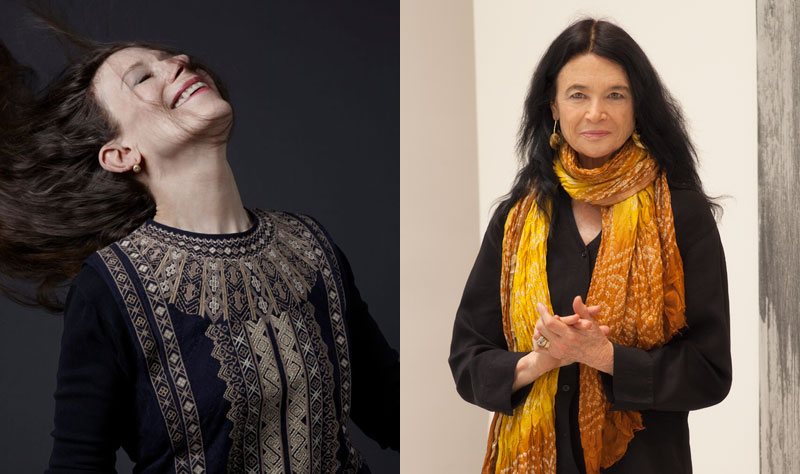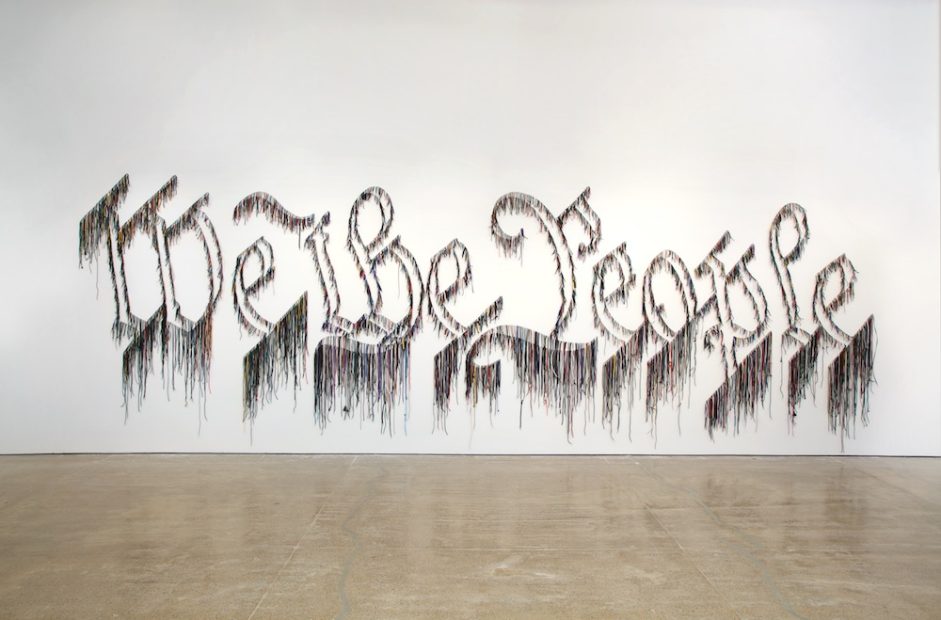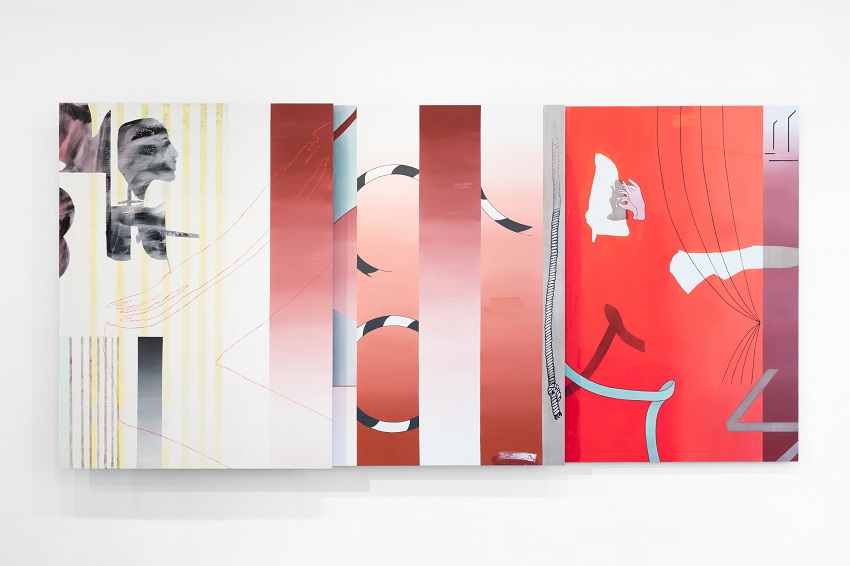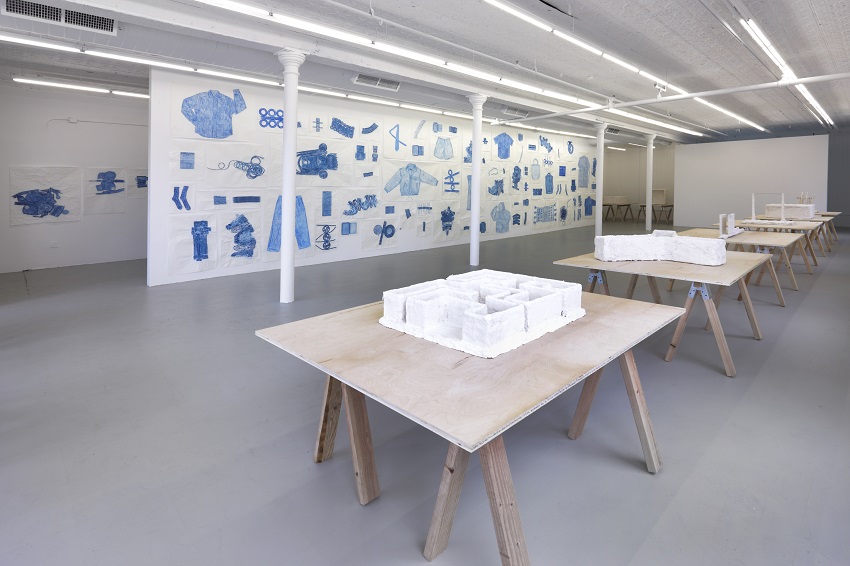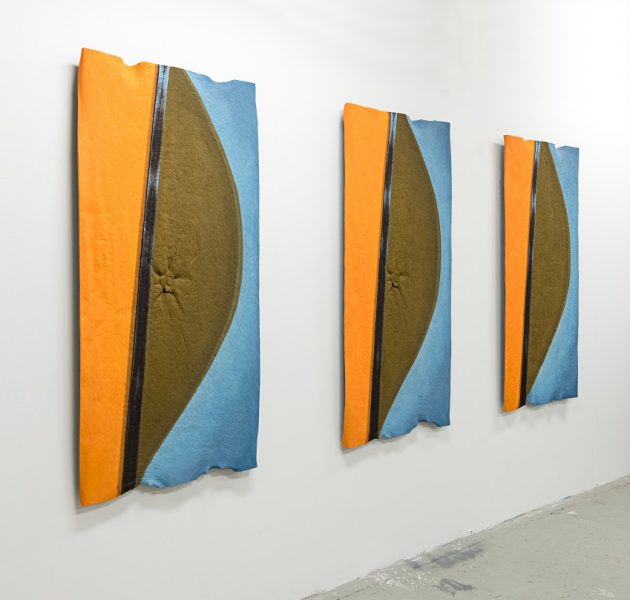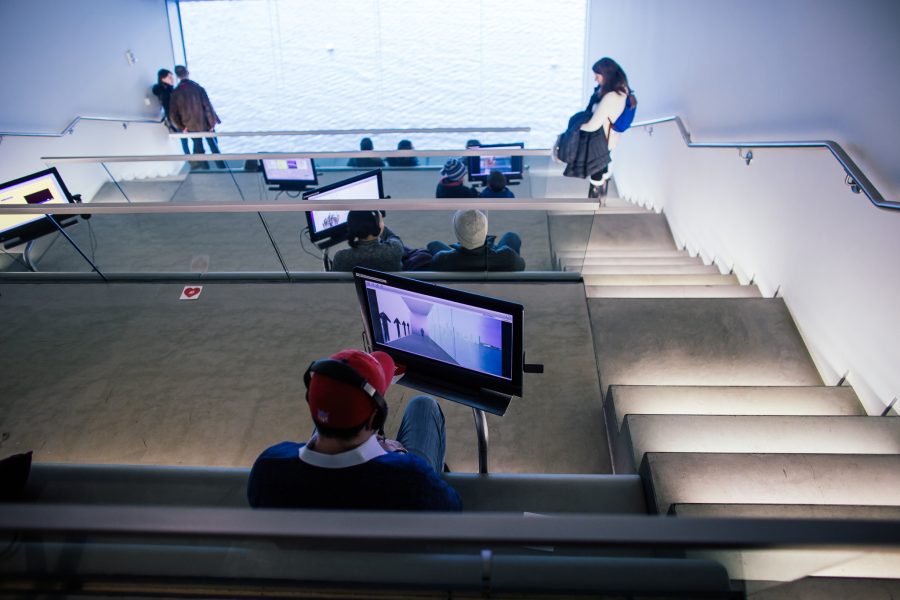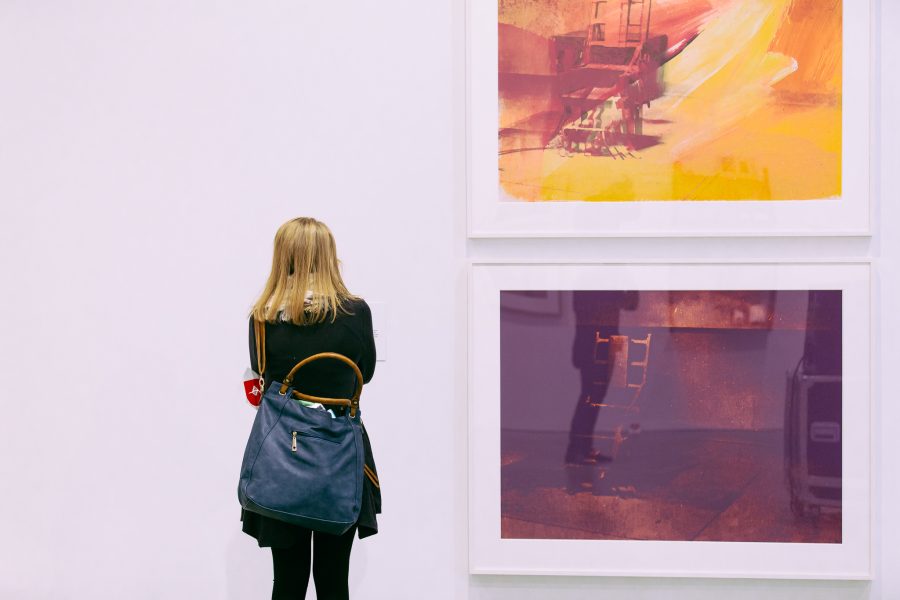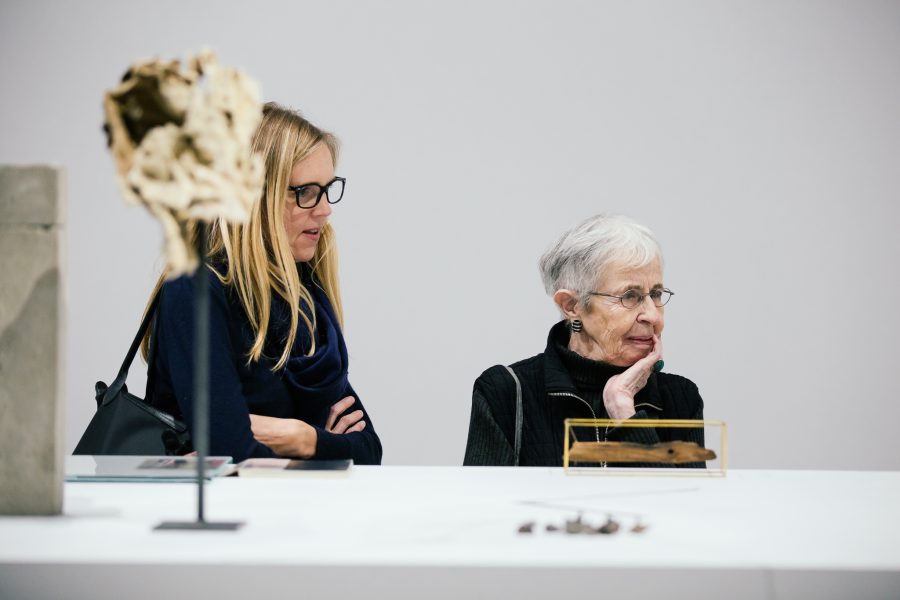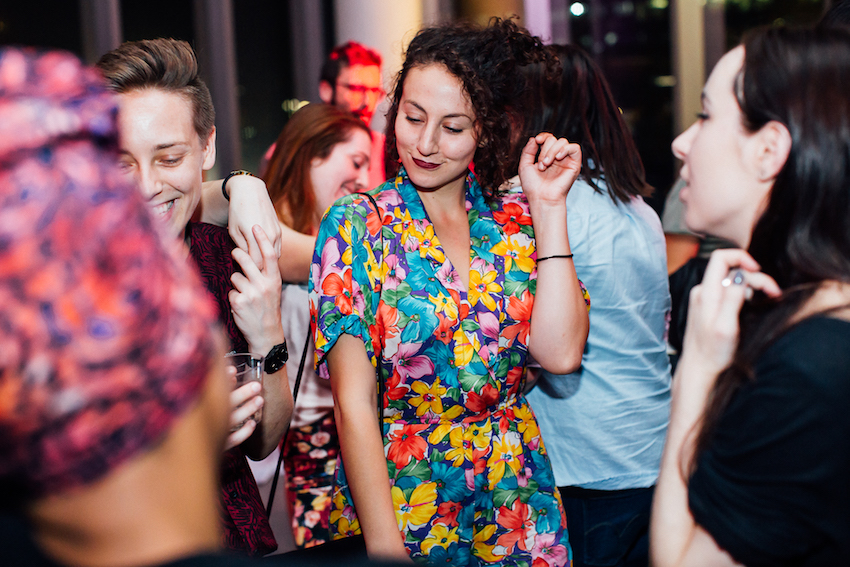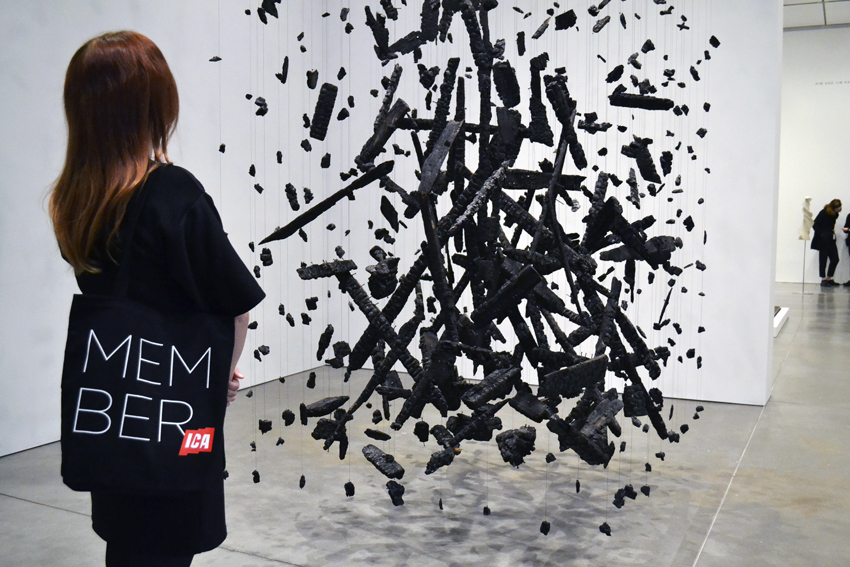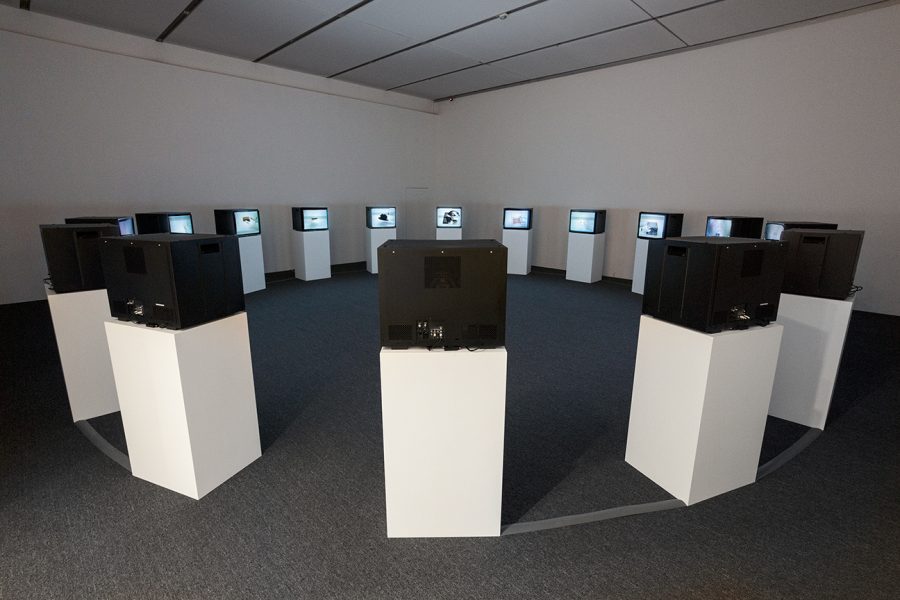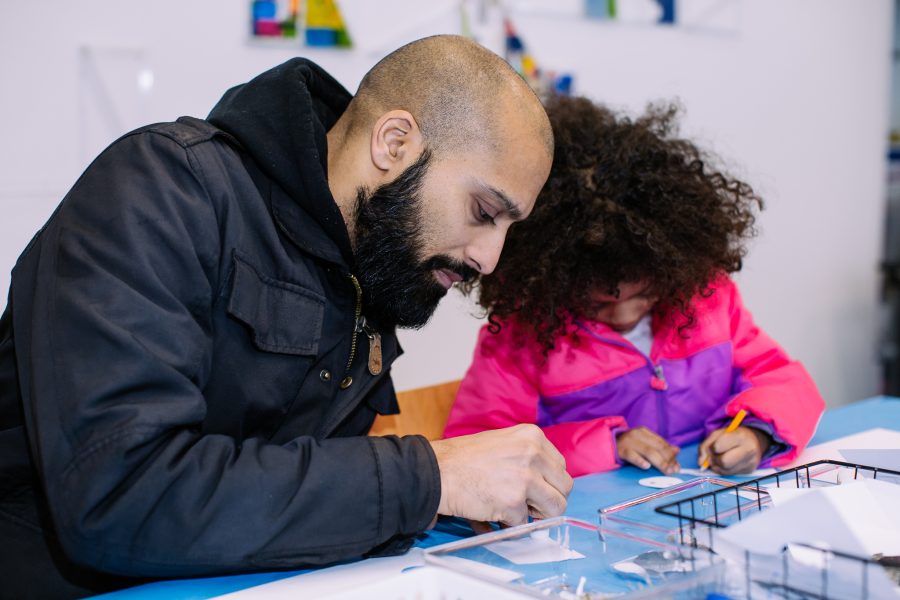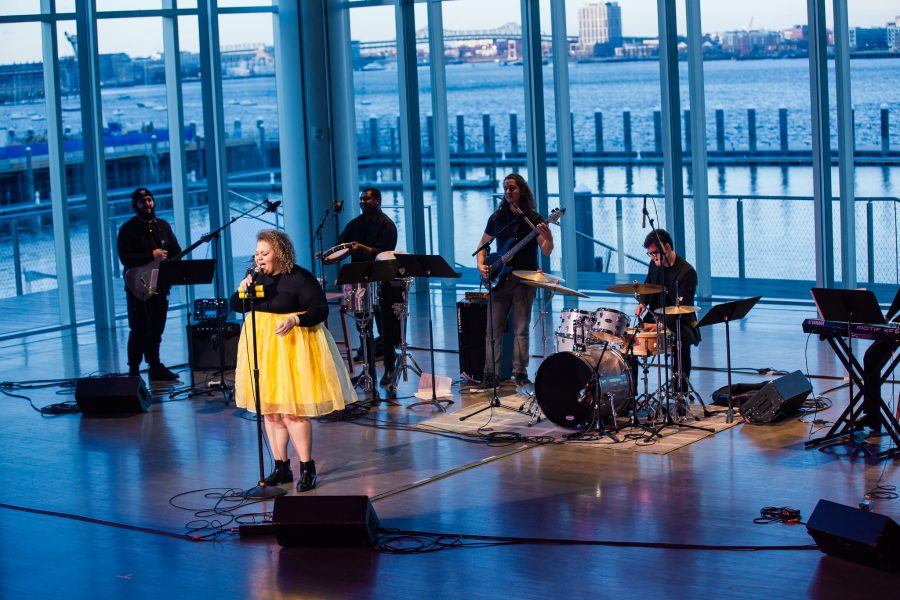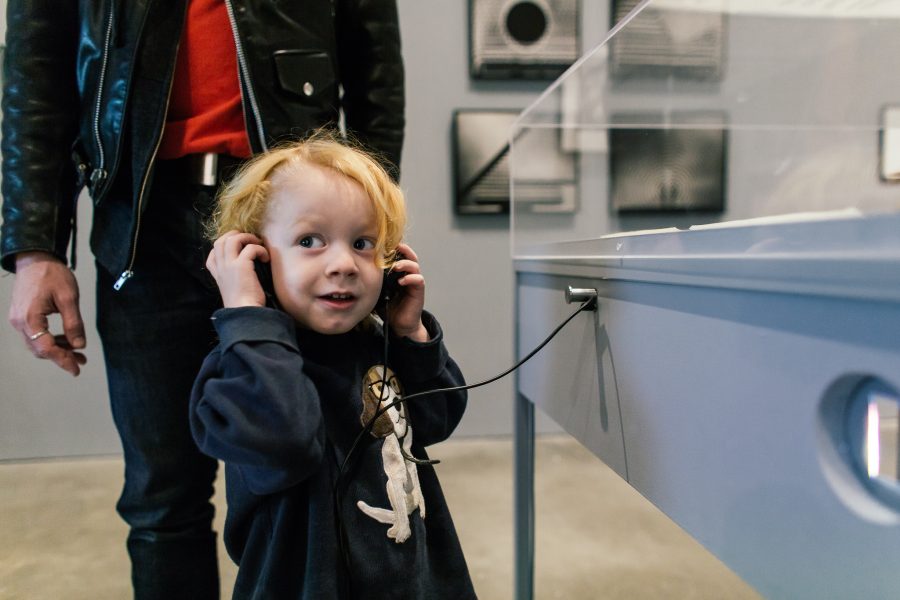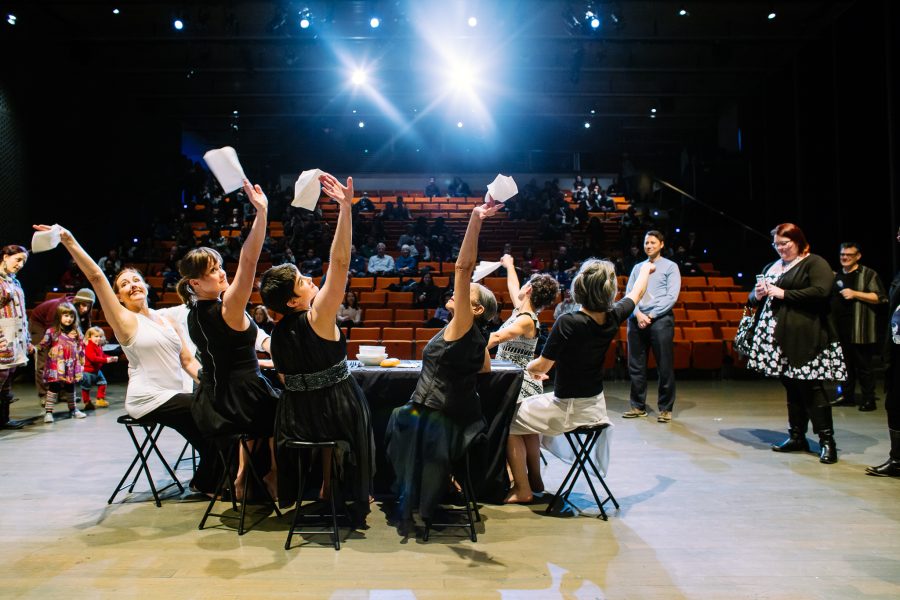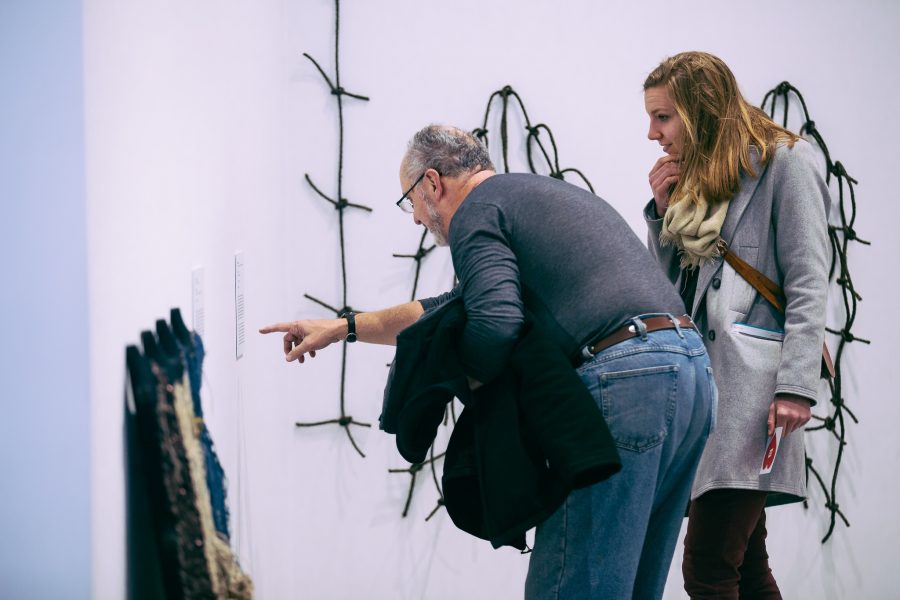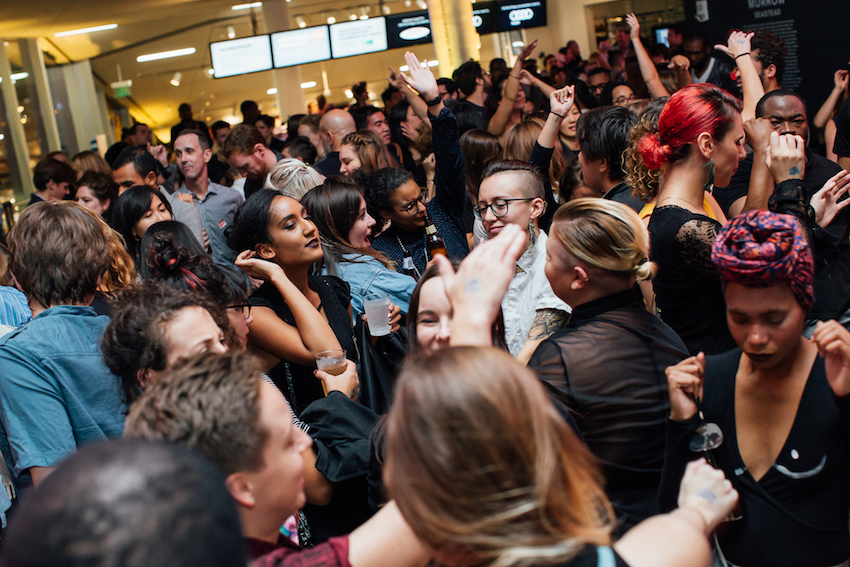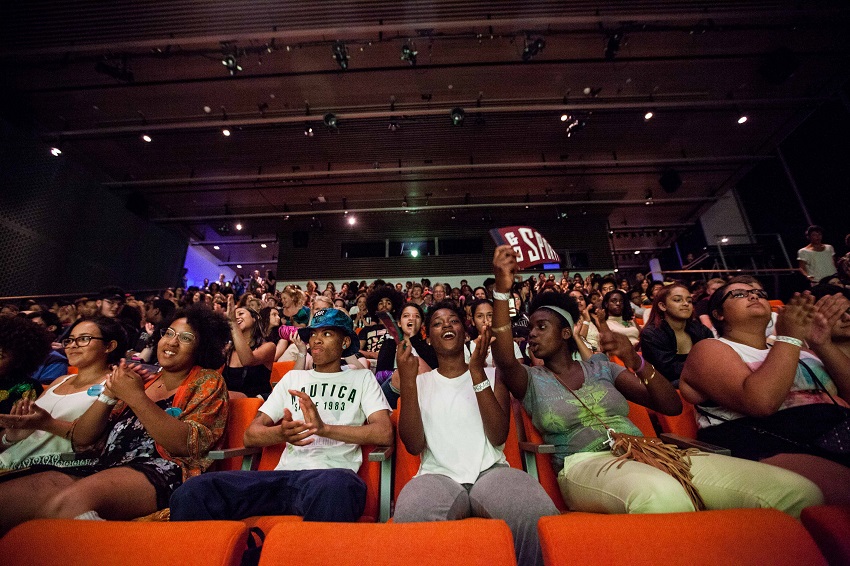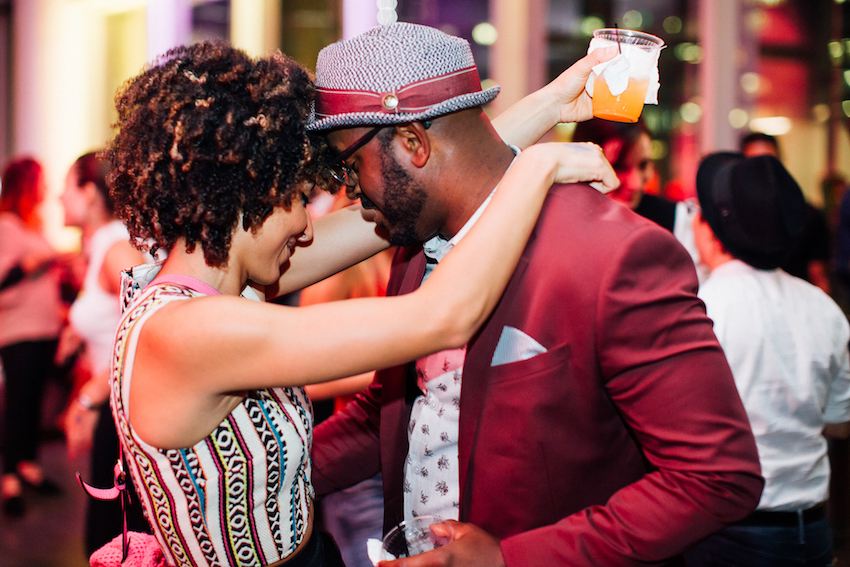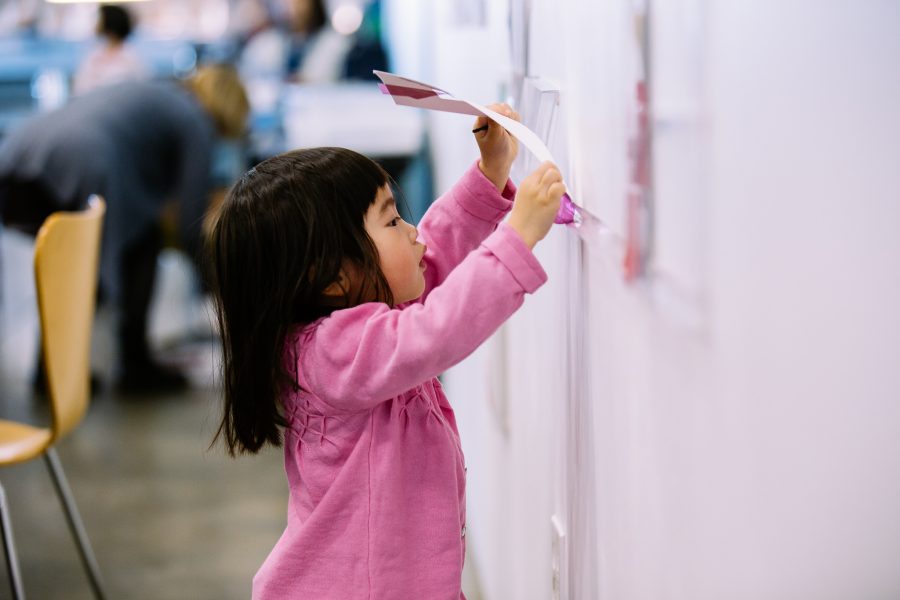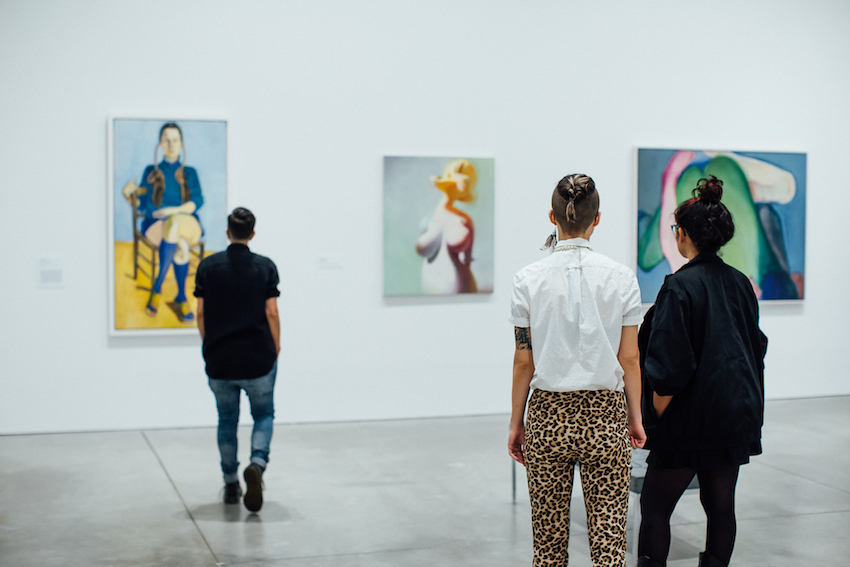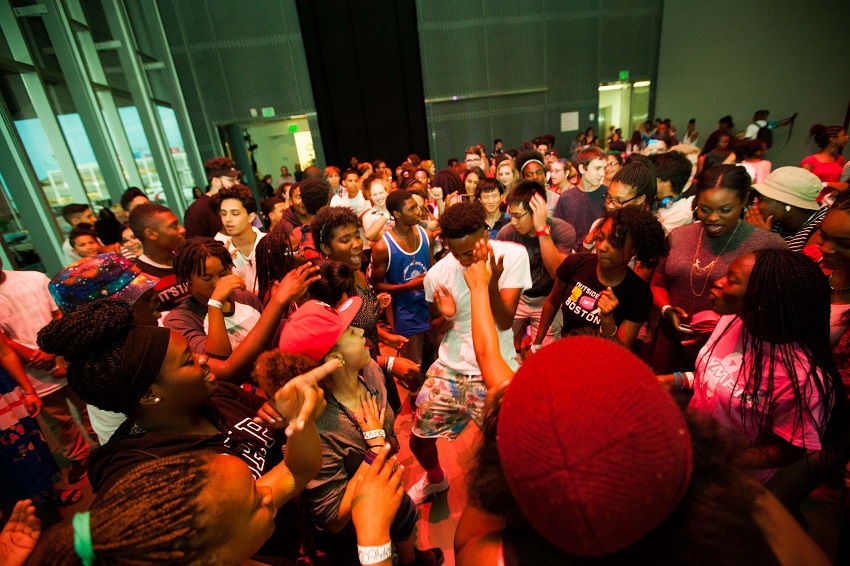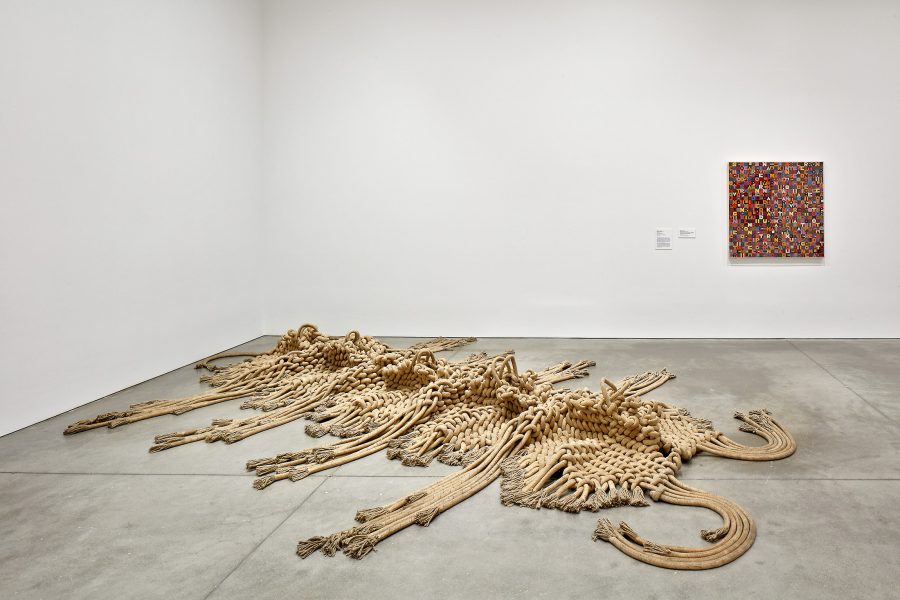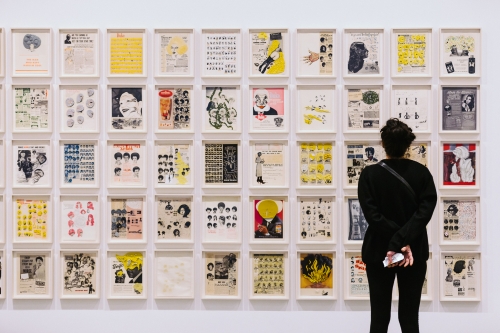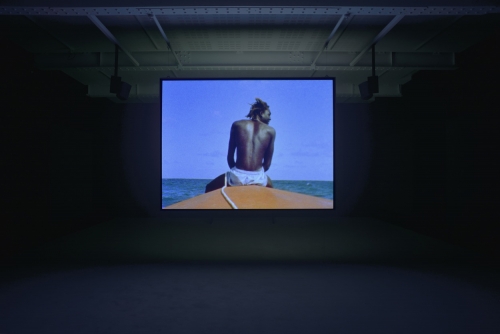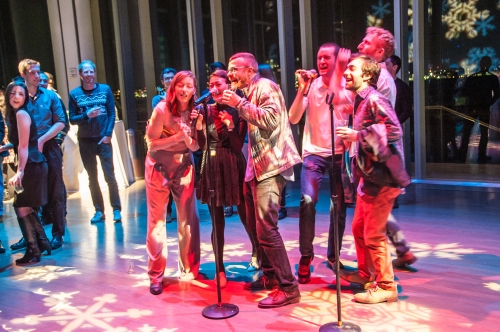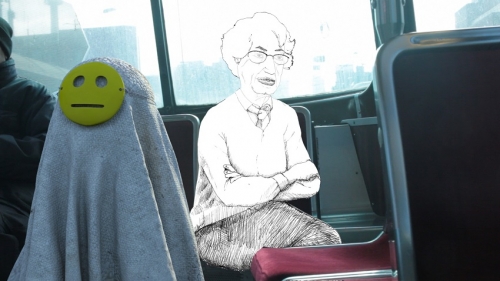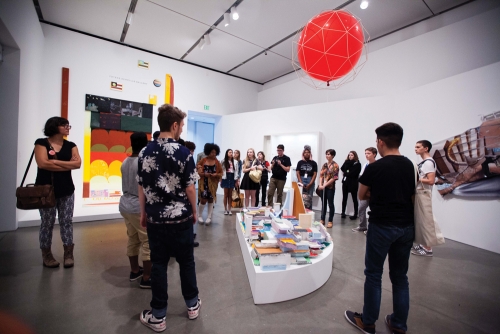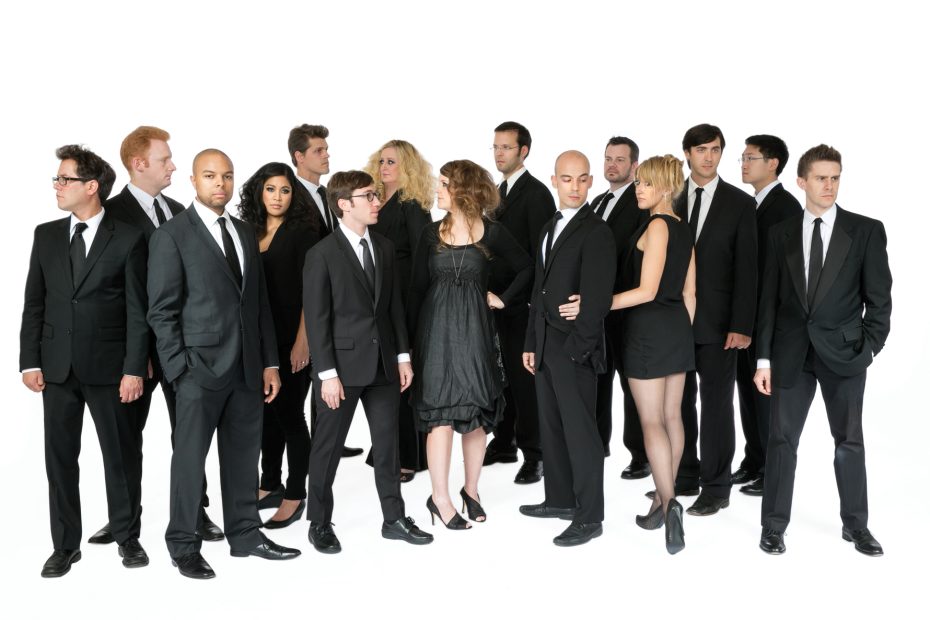
The Institute of Contemporary Art/Boston (ICA) presents a wonderful musical event with New York-based Talea Ensemble performing Gérard Grisey’s Talea, the Boston premiere of Center for New Music Director Joshua Fineberg’s L’abîme, and the U.S. premiere of Tristan Murail’s Liber Fulguralis. A co-production of the ICA/Boston and the Boston University Center for New Music, Talea will take center stage on April 13 at 8:00 PM in the Barbara Lee Family Foundation Theater at the ICA, 25 Harbor Shore Drive, Boston. Tickets ($15 general admission; $10 ICA members + students) can be purchased at http://www.icaboston.org or by calling 617-478-3103.
Talea has given many important world and U.S. premieres of new works by composers including Pierre Boulez, Tristan Murail, James Dillon, Pierluigi Billone, Hans Abrahamsen, Stefano Gervasoni, Marco Stroppa, and Fausto Romitelli. The ensemble has performed at the Internationales Musikinstitut Darmstadt, Wien Modern, Contempuls, Spectrum XXI Festival, Nevada Encounters of New Music (NEON), La Ciudad de las Ideas (Mexico), Art Summit Indonesia (Jakarta), and the International Contemporary Music Festival of Lima, Peru. Radio broadcasts of performances have been heard on ORF (Austria), HRF (Germany), and WQXR’s Q2.
As an active collaborator of new music, Talea has joined forces with the Austrian Cultural Forum, Consulate General of Denmark, Korean Cultural Service NY, Italian Cultural Institute, and the Ukrainian Institute. Assuming an ongoing role in supporting and collaborating with student composers, Talea has served as ensemble in residence at Harvard University, Columbia University, Stanford University, Ithaca College, Cornell University and New York University. Talea has recorded works on the Living Artists Label, Gravina Musica, Tzadik, and New World Records.
This program is made possible in part by the FACE Contemporary Music Fund, a program of FACE with major support from the Cultural Services of the French Embassy, SACEM, Institut français, and the Florence Gould Foundation.
“Meredith Monk is a legend.”
This February, the ICA brings the incomparable vocalist, composer, and multidisciplinary artist Meredith Monk to Boston for the first time in more than twenty years. She will be joined onstage by the celebrated poet Anne Waldman, a leader in the beat and experimental poetry scenes since the 1960s.
Now 74, Monk has been a mainstay of experimental music and performance for more than 50 years, creating multi-disciplinary works that combine music, theater, movement, and film since the 1960s. A pioneer in “extended vocal technique,” she has broken ground in exploring the voice as an instrument that she believes can “unearth feelings, energies, and memories for which there are no words.”
Beloved by audiences and lauded by critics, Monk is the winner of the National Medal of Arts, a MacArthur “genius” grant, and several Guggenheim Fellowships.
One day, I just had a revelation that the voice could be an instrument… that it could move like my hand moves, that it could be like the spine, that it could jump, that it could turn, that it could fall … that within it were all these feelings that we don’t have words for.
—Meredith Monk
She released her most recent album, On Behalf of Nature—a meditation on ecology and climate change that the New Yorker called “visceral and ethereal, raw and rapt”—in November 2016.
Anne Waldman, a prolific poet, playwright, activist; the recipient of multiple awards; and the author of more than 40 collections of poetry and poetics, including Fast Speaking Woman (1975) and Marriage: A Sentence (2000), was a founder and director of The Poetry Project at St. Mark’s Church in New York and co-founded with Allen Ginsberg the Jack Kerouac School of Disembodied Poetics at Naropa University in Boulder, Colorado.
Waldman kicks off the evening in three parts with a performative reading from her “Entanglement Variations,” with visuals of paintings by Pat Steir and sound composition by Ambrose Bye. Monk will then perform several selections of her work with members of her longstanding Vocal Ensemble. The evening culminates in an original collaborative duet between the two artists.
We spoke with John Andress, Curator of Performing Arts and a musician himself, about these phenomenal artists and what we might expect from their performance.
Recently promoted to Curator of Performing Arts, you’ve been doing the music programming at the ICA, among other things, for several years. What do you look for when choosing acts to bring to the ICA?
I respond enthusiastically to artists who create a new and unique landscape, either sonically or visually, that I, as the viewer or listener, can enter. Through extraordinary, detailed, and rigorous invention, the artists I most admire devise a theatrical world that is uniquely original. During a live performance, the artist and audience step into what seems like a new universe together, where the confines of the theater dissolve, time stops, and it feels like the work is created right in that moment. That quality is incredibly difficult to achieve, but when it does, it’s electric.
This season we’re featuring Meredith Monk, one of the most celebrated experimental musicians and cross-disciplinary artists of her generation. Why is she a good fit for the ICA?
Meredith Monk is a legend; a genius, according to the MacArthur Foundation. And she has not performed in Boston in more than two decades! That alone seems reason enough to present her work at the ICA. But setting aside the numerous awards and accolades she has received throughout her 50 year career, Monk is a unique and singular figure in music. She is a vocalist, a composer, and an interdisciplinary artist, creating solos, chamber pieces, multimedia operas, and orchestral works—and her incredible extended vocal techniques have expanded the possibilities of composition for the voice. Her work cannot be labeled as merely classical, experimental, or vocal; it exists beyond the boundaries of a single genre.
Monk has quite an unusual way of composing, and of notating, music. Can you talk about that?
When composing, Monk brings fragments of ideas to rehearsals—maps or cells—rather than a notated score. Working closely with her fellow singers, the Meredith Monk Vocal Ensemble, the musicians improvise, investigate, and manipulate Monk’s ideas, crafting the work through collaborative exploration. Though it can be transcribed into a proper notated score, the music exists most accurately and viscerally in the body of the performer, much like the way a choreographer makes work with a company of dancers.
Monk’s work is unusually difficult to categorize—in 2012, the Guardian called her unclassifiable—but can you talk about some of the wells she’s drawing from?
In that same Guardian article, Monk’s music is described as simultaneously ancient and modern. It’s as if the sounds were pulled from the past while foreseeing the future. Monk rose to prominence in the 1970s and has often been compared to other minimalist composers like Phillip Glass and Steve Reich, but her music emphasizes ritual and repetition in a way that almost feels liturgical.
In this performance, she’ll be joined by Anne Waldman, the acclaimed poet, activist, educator, performer, and committed collaborator. How important is the act of collaboration to the work of these two artists?
Throughout their careers, both artists have routinely collaborated with colleagues working in other genres. Waldman has worked with visual artists Richard Tuttle and Elizabeth Murray, the dancer Douglas Dunn, and musicians Don Cherry and Steve Lacey. Monk has collaborated with visual artist Ann Hamilton, filmmaker and dancer Shen Wei, and, of course, numerous musicians. I think for both artists collaboration acts as a catalyst and opens up new possibilities and creative pathways to follow.
What will you be looking and listening for at the performance?
First and foremost, I’m excited to see two peerless artists perform together at the ICA. Both Waldman and Monk have been extraordinarily influential in their respective fields, inspiring their contemporaries and forging new paths for younger poets and musicians. What kind of magical alchemy will occur when they perform together? I, for one, am eager to see.
Largest Exhibition of The Artist’s Work to Date Speaks to Issues Around Politics, Spirituality, Identity, and Migration
Press are welcome to preview the exhibition on Tuesday, April 25. Please contact Lisa Colli, lcolli@icaboston.org or 617-480-4664, to RSVP or if you need additional information or images.
On April 26, the Institute of Contemporary Art/Boston (ICA) opens Nari Ward: Sun Splashed, the most significant exhibition of the artist’s work to date. Ward (b. 1963 in St. Andrew Parish, Jamaica) actively engages with local sites—their histories, communities, and economies—to create spectacular, ambitiously scaled artworks out of unlikely materials.
Sun Splashed includes artworks made from soda pop bottles, shoelaces, shopping carts, and a fire escape—materials that speak to the artist’s distinctive experimentation and resonate with social, political, and cultural meaning. Working in sculpture, collage, photography, video, installation, and performance, Ward captures the makeshift qualities of everyday life and imbues his production with a visceral relationship to history and the real world. The exhibition focuses on vital points of reference for Ward including his native Jamaica, citizenship and migration, and African-American history and culture, to explore the dynamics of power and politics in society. The exhibition is organized by Pérez Art Museum Miami Associate Curator Diana Nawi. The Boston presentation, on view through September 4, is coordinated by Ruth Erickson, ICA Associate Curator, with Jessica Hong, Curatorial Associate.
“The ICA first introduced Nari Ward to Boston audiences in the 1998 exhibition, The Quiet in the Land, and again in 2000 as part of a public project, Art on the Emerald Necklace. Then, as now, Ward uses familiar materials in resonant ways to reflect on the ideas, experiences, and artifacts of community, democracy, and homeland,” said Jill Medvedow, Ellen Matilda Poss Director of the ICA.
“Emerging alongside a notable group of African-American artists who rose to prominence in the 1990s, Ward takes on a massive and tactile approach to art-making and has expanded contemporary definitions of installation, assemblage, and site-specificity,” said Erickson. “His deft use of found objects imbues his work with an instinctive connection to the past as well as the present, allowing him to challenge viewers’ perceptions of familiar objects and experiences.”
Exhibition Highlights
Sun Splashed features approximately 43 works, including:
- Happy Smilers: Duty Free Shopping, 1996—An immersive architectural installation that includes a real fire escape, found domestic appliances wrapped in firehoses, and an audio track.
- Savior, 1996—A 10-foot tall sculpture that transforms a quotidian shopping cart through intricate assemblage and wrapping.
- Glory, 2004—A trenchant installation centered on a tanning bed made from oil barrels incised with the American flag.
- Naturalization Drawing Table, 2004—An interactive installation based on Ward’s experiences of becoming a U.S. citizen that gives visitors a better understanding of the bureaucratic process. When activated (on select days), participants will be able to have passport photos taken, fill out a facsimile of an INS naturalization form, have it notarized, and then return it to the artist to keep and display. Upon completing the ‘naturalization’ process, the participant will receive a set of prints from Ward.
- Mango Tourist, 2011—A play on a form the artist has returned to in many works, the snowman, these larger than life sculptures transpose these frozen figures into tropical “tourists” made from foam, electrical detritus, and mango seeds.
- We the People, 2011—A large-scale installation in which the opening phrase of the United States Constitution is transcribed onto the wall using hand-dyed shoelaces. Ward will work with participants in the ICA’s Teen Arts Program to install the work at the museum.
- Homeland Sweet Homeland, 2012—A densely textured work that transcribes the Miranda Rights—the rights of citizens when interacting with police officers and prosecutors—into a seemingly domestic wall hanging that upon closer inspection contains all manners of collaged found elements including barbed wire, metal spoons, and embroidery.
- Canned Smiles, 2013—Two tin cans, one labeled “Jamaican Smiles” and one labeled “Black Smiles,” which reference a seminal 1961 work of conceptual art by Italian artist Piero Manzoni and play with structures and limitations of ideas around national and racial identity.
- Land, 2002-14—A large-scale sculptural “tree” made of hundreds of tricycle and stroller wheels that will be installed on the ICA’s first floor. Speakers play a soundtrack of wheels moving across surfaces, adding a sense of mobility to the piece. The sculpture’s wheels and lack of roots serve as metaphors of migration, especially pertinent today as masses of people traverse the globe seeking new roots in foreign lands.
The Artist’s Voice: Nari Ward and Tania Bruguera, Thursday, April 27, 7PM
The relationship between art and politics is continually redefined by today’s artists living in an increasingly divisive social and political landscape. In this special engagement, guests will hear from two extraordinary artists—Ward and Tania Bruguera—who have taken different approaches to responding to their important roles as artist and citizen. Bruguera (born 1968 in Havana, Cuba) considers herself an ‘initiator’ and has developed various long-term collaborative projects, such as Migrant People Party and the Institute of Artivism Hannah Arendt. She recently announced her candidacy for presidency in Cuba. Ward and Bruguera will be joined by ICA curator Ruth Erickson in this important and timely discussion. Free admission, first come, first served; tickets available at the box office two hours prior to start of program.
Concurrent Socrates Sculpture Park Exhibition (Queens, NY)
New York’s Socrates Sculpture Park is concurrently presenting a solo exhibition of Nari Ward on view April 29-September 4, 2017. The exhibition, Nari Ward: G.O.A.T., again, will feature a series of six newly commissioned outdoor artworks that will traverse the five-acre park and bring new insight into the artist’s ongoing exploration of identity, social progress, the urban environment, and group belonging. Nari Ward: G.O.A.T., again is organized by Socrates Sculpture Park and curated by Jess Wilcox, Director of Exhibitions. Founded in 1986 as an open space dedicated to producing and presenting contemporary public art, Socrates is located on the East River waterfront of Long Island City, Queens, New York. Visit http://socratessculpturepark.org/nariward for more details.
Organization of Nari Ward: Sun Splashed and its presentation at the Pérez Art Museum Miami has been made possible by Citi and the Andy Warhol Foundation for the Visual Arts, with additional support from the Funding Arts Network and Gander and White.
Support for the Boston presentation is generously provided by the Residence Inn.
Featuring Sonia Almeida, Jennifer Bornstein, Lucien Castaing-Taylor and Véréna Paravel, and Lucy Kim
New ‘Foster Talks’ Expand Dialogue and Invite Engagement
Press are welcome to preview the exhibition on Tuesday, February 14. Please contact Lisa Colli, lcolli@icaboston.org or 617-480-4664, to RSVP or if you need additional information or images.
The Institute of Contemporary Art/Boston (ICA) presents the 2017 James and Audrey Foster Prize exhibition with major work on view for the first time in Boston from Sonia Almeida, Jennifer Bornstein, Lucien Castaing-Taylor and Véréna Paravel, and Lucy Kim. While they explore a range of subjects—from forms of body modification and genetically engineered mice, to worlds of visual communication and commercial fishing—each artist makes the human body central to their project, using rigorous processes to explore its social, psychological, personal, and historical resonances. Their engagement with contemporary media and subjects nonetheless reimagines age-old forms and concerns: death masks, grave rubbings, communication through signs and symbols, and the attempt to capture plainly nature’s indescribable enchantment and brutality.
On view from February 15 through July 9, the exhibition is organized by Dan Byers, Mannion Family Senior Curator, with Jeffrey De Blois, Curatorial Associate.
“This year’s James and Audrey Foster Prize exhibition shines a light on four Boston-area artists working at a national and international level, but whose work has only received limited exposure here at home,” said Jill Medvedow, Ellen Matilda Poss Director of the ICA. “We are grateful to Jim and Audrey for this opportunity to share such exceptional work with our audiences.”
Central to the exhibition, this iteration of the James and Audrey Foster Prize features a new program, Foster Talks, enabling audiences to engage more deeply with the work and practice of the Prize winners. Over the course of the exhibition, each artist will present their work in conversation with an important figure who has influenced their art. The conversations will be followed by a free reception, open to the public.
“The 2017 Foster Prize artists demonstrate the creativity, strength, and talent of Boston’s art community,” said James Foster, Chair of the ICA Board of Trustees and Chairman, President & Chief Executive Officer of Charles River Laboratories.
ICA Advisory Board member Audrey Foster added, “Through the exhibition and particularly with the addition of the Foster Talks, we hope ICA audiences will gain a greater appreciation for and connection to these incredible artists and their work.”
The James and Audrey Foster Prize is key to the ICA’s efforts to nurture and recognize exceptional Boston-area artists. First established in 1999, the Foster Prize (formerly the ICA Artist Prize) expanded its format when the museum opened its new facility in 2006. James and Audrey Foster, passionate collectors and supporters of contemporary art, endowed the prize, ensuring the ICA’s ability to sustain and grow the program for years to come.
Foster Talks
These are in-gallery conversations that will address the work, as well as diverse influences on the creative process. Talks are free, but capacity is limited. Tickets can be reserved starting March 1. Visit www.icaboston.org for more information.
- Thursday, March 16, 7 PM: Lucien Castaing-Taylor and Véréna Paravel with Dennis Lim, Director of Programming, Film Society of Lincoln Center.
- Thursday, April 20, 7 PM: Lucy Kim with Melissa Doft, plastic surgeon, and Stephen Marino, Kim’s personal trainer.
- Thursday, May 11, 7 PM: Jennifer Bornstein with Rhea Anastas, art historian, critic, curator, and Associate Professor in the Art Department at the University of California, Irvine.
- Thursday, June 8, 7 PM: Sonia Almeida with Ulrike Müller, artist.
Foster Prize Artist Bios and Works
Sonia Almeida was born in Lisbon, Portugal, and lives in Arlington, MA. Almeida received a B.A. from Faculdade de Belas Artes da Universidade de Lisboa and a M.F.A. from Slade School of Fine Art, University of London. She has received numerous awards and grants, including a Pollock-Krasner Foundation grant and an Artist Fellowship from the Massachusetts Cultural Council. Her work has been widely exhibited at institutions nationally and internationally, including the MIT List Visual Arts Center, Cambridge; Culturgest, Portugal; Serralves Museum, Portugal; and Witte de With, Netherlands.
Sonia Almeida’s paintings repeatedly explore disparate yet connected themes and visual languages brought together within a single work. Her interests in non-verbal forms of communication, symbolism and abstraction, and the slippages of translation are interwoven across this body of work. Her paintings move from the traditional flat support of plywood, to two-sided paintings attached to the wall with hinges, as well as tapestries, and hand-made artist’s books. In each instance motifs repeat—for instance a digital image of a face in relief or images taken from a YouTube tutorial on how to render ribbons in 3D in Photoshop—against the repeated interplay between foreground and background, and layers of painted surface that Almeida improvises as she paints.
For this exhibition, Sonia Almeida presents a body of recent works alongside an earlier painting YRMB, 2011–12. Several of the paintings employ non-verbal sign systems, including the alphabet made with the human body, Raven’s Progressive Matrices—a test used to measure abstract reasoning ability, spatial awareness, and memory—and Belgian-born French artist and poet Henri Michaux’s drug and trance-induced mark-making.
Jennifer Bornstein was born in Seattle and lives in Cambridge, MA. Bornstein received a B.A. from the University of California, Berkeley, and a M.F.A. from the University of California, Los Angeles, before participating in the Whitney Museum of American Art’s Independent Study Program. She has received numerous awards and grants, including a DAAD Berliner Künstlerprogramm fellowship and a Pollock-Krasner Foundation grant. Her work has been widely exhibited at institutions nationally and internationally, including the Whitney Museum of American Art, New York; the Museum of Contemporary Art, Los Angeles; and the Stedelijk Museum, Amsterdam.
Jennifer Bornstein often makes works that combine subjects and media from different times and places, employing media such as video, 16-millimeter film, sculpture, etching, and other approaches to printmaking. Bornstein’s work for the exhibition brings together videos, a series of hand-made plaster sculptures, and a group of encaustic (wax) rubbings (frottage) on kozo paper. The videos depict mice interacting with her sculptures, miniature “film sets” built according to standardized instructions for conducting psychological tests in laboratory research environments. Bornstein combines the traditional, at times elegiac process of frottage—a technique often used to take impressions of text and texture from gravestones—with a very contemporary protagonist, the genetically-modified mouse negotiating sculptures derived from lab tests.
Many of the objects depicted in the rubbings belonged to Bornstein’s father, who passed away in 2013. A scientist specializing in collagen research, he genetically engineered these particular mice to have a mutation causing unusual and extreme physical flexibility. To create the rubbings of clothing and other soft objects, Bornstein covered each article in resin to harden its surface. For this presentation, she combines the rubbings of her father’s belongings with two related bodies of work: rubbings of architecture, in which she memorialized various spaces and details of the Dia Art Center in New York City on the eve of that building’s transformation into luxury lofts; and her most recent group of rubbings focused on technology.
Lucien Castaing-Taylor was born in Liverpool, UK, and Véréna Paravel was born in Neuchâtel, Switzerland; they are based in Cambridge, MA, and Paris, France. Castaing-Taylor’s work is in the permanent collections of the Museum of Modern Art, New York, and the British Museum, London, and has been exhibited at Tate, London; Centre Pompidou, Paris; the Museum of Modern Art, New York; Whitney Museum of American Art, New York; Whitechapel Gallery, London; and Institute of Contemporary Arts, London. Paravel’s films have won Best First Feature and the Best First Feature Jury award at the Festival del Film Locarno and the Punto de Vista Award for Best Film. Foreign Parts (with J.P. Sniadecki, 2010) was a New York Times Critics’ Pick.
Anthropologists and artists working in film, video, and photography, Castaing-Taylor and Paravel’s collaborative and individual projects uniquely challenge the conventions of documentary filmmaking. In 2006, Castaing-Taylor founded the Sensory Ethnography Lab (SEL), an experimental film center at Harvard University whose collaborative output in a variety of media—including film, video, phonography, and photography—innovatively draws from the fields of aesthetics and ethnography. Many of the projects realized through the SEL are collaborative in nature, and employ various media for in-depth explorations of their particular subjects, which range from shepherds and their flocks in the American West to an auto parts junkyard in Queens, New York. Castaing-Taylor, Paravel, and the SEL were included in the 2014 Whitney Biennial.
Their film Leviathan will be shown in a gallery in Boston for the first time. Shot aboard a commercial fishing vessel nearly two hundred miles off the coast of New Bedford, Massachusetts—the former whaling capitol of the world immortalized as the port of departure for the Pequod in Herman Melville’s novel Moby Dick (1851)—Leviathan plunges into the world of industrial fishing from multiple, embodied points of view. Castaing-Taylor and Paravel synthesize numerous perspectives and experiences by affixing compact, waterproof GoPro cameras to fishermen’s bodies and to wooden poles that are plunged into the water and hoisted up high above the boat, capturing sights and sounds that allow the viewer to viscerally experience the sensations present on the boat.
Lucy Kim was born in Seoul, South Korea, and lives in Cambridge, MA. She received a B.F.A. from the Rhode Island School of Design and a M.F.A. from the Yale School of Art. She attended the Skowhegan School of Painting and Sculpture and the MacDowell Colony, and is the recipient of the Boston Artadia Award. She is a founding member of the collaborative kijidome, and is currently Lecturer in Fine Arts at Brandeis University. In addition to an upcoming commission for The Great Hall of the Institute of Fine Arts — New York University, New York, Kim has had solo exhibitions at Lisa Cooley, New York; and the Brooklyn Academy of Music, Brooklyn, New York. Her work is included in the collection of the Kadist Foundation in Paris, among others.
Lucy Kim’s wall sculptures debuting in the exhibition capture with casting the likeness of three people whose work alters the human body: plastic surgeon Dr. Melissa Doft; Kim’s personal trainer Stephen Marino; and geneticist, molecular biologist, mathematician, and director of the Broad Institute of MIT and Harvard, Eric S. Lander.
With these works, Kim breathes new life into the tradition of “death masks,” casts taken of a face just after death to commemorate the deceased. Her meticulously constructed life masks, repeated into patterns, record her subjects in repose, eyes closed during the arduous process of the cast’s creation. In doing so, each artwork registers an uncanny transitional state, lifelike yet frozen, unique yet multiplied, between image and object, distorted yet descriptive.
When Kim met Dr. Doft she became interested in people and jobs that shifted cultural perceptions of the body through different means of manipulation. Her three subjects shape DNA, muscles, and tissue and skin. In each of these professionals’ ability to change the body’s physical appearance, and thus its social and cultural impact—from policy, health, and psychology, to desire, insecurity, and self-confidence—Kim finds analogs for her own explorations into the relationships between physical experience and perception.
The exhibition and Foster Talks are generously endowed by James and Audrey Foster.
Supported by
The ICA organizes the first U.S. survey of the work of artist Mark Dion. Mark Dion: Misadventures of a 21st-Century Naturalist examined 30 years of his pioneering inquiries into how we collect, interpret, and display nature. A highlight of the exhibition, the installation The Library for the Birds of New York/The Library for the Birds of Massachusetts, brought live canaries and finches to the galleries.
Planning to see more art in 2017? Make new friends? Expand your horizons? Boost your creativity? We’ve got you covered. Check those resolutions off your list at the ICA!
1. See More
This season at the ICA we’ve got the “powerful” (Boston Globe) collection exhibition First Light: A Decade of Collecting at the ICA, plus the thought-provoking The Artist’s Museum and a brand-new monumental installation by Gillian Wearing.
Pro tip: Up your Instagram game with inspiration from Rachel Harrison’s Voyage of the Beagle, which explores fine art, public art, and kitsch in an unexpected series of digital photos.
Plus don’t miss THREE new exhibitions opening in February:
2017 James and Audrey Foster Prize Exhibition
The 2017 prize and exhibition will feature the work of Boston-based artists Sonia Almeida, Jennifer Bornstein, Lucien Castaing-Taylor and Véréna Paravel, and Lucy Kim—artists working at a national and international level whose work has received limited exposure in Boston.
Steve McQueen: Ashes
A Venice Biennale standout by Academy Award–winning artist Steve McQueen makes its U.S. debut.
ICA Collection: New Acquisitions
With exciting new works, New Acquisitions continues to focus on the incredible growth of the collection in recent years.
2. GET OUT more
Grab your crew and head to the ICA for an evening of art and fun at our museum-wide party, held on the first Friday of every month! Looking for a more intellectual bent? Come by for ICA Gallery Talks led by scholars and other thinkers on second Sundays. Watching your wallet? The ICA is FREE every Thursday night from 5–9 PM, with free exhibition-focused free tours.
- First Fridays: Ice Ice Baby
All right stop, collaborate, and listen. Warm up this February at the ICA with 90s karaoke, a jumping dance party, a cozy cocktail, and, as always, some killer contemporary art. - ICA Gallery Talks
Looking for a more intellectual bent? These conversations led by artists, scholars, and other creative professionals who share their perspectives on contemporary art at the ICA are offered the second Sunday of every month.
3. Explore More
Break out of the (white) box.
Ottawa International Animation Festival
The Best of Ottawa 2016 is a collection of jury-awarded short films and fan favorites from the 40th anniversary edition of the Ottawa International Animation Festival, North America’s largest animation event
Sundance Film Festival Shorts
Including fiction, documentary, and animation from around the world, the 2016 program ranges from wild comedy to reflective poetry. The artistry and unforgettable stories will resonate with audiences long after they end.
Alessandro Sciarroni’s FOLK-S, will you still love me tomorrow
In FOLK-S, Sciarroni refines the Schuhplattler, a Bavarian folk dance whose title translates to “shoe batter,” to its most essential form, invoking a sense of playful experimentation and ritualized trance.
Meredith Monk and Anne Waldman
Two iconic women known for their mesmerizing stage presences join forces for a singular evening of music, movement, and poetry.
4. play more
Visit the ICA with your nearest and dearest, whether kids or kids at heart. Have a wee one in tow? Create an engaging museum experience for even the littlest visitor with ICA Gallery Games, a free pack filled with activities and tips for looking at and talking about the art on view. And don’t miss special vacation week activities!
Play Date: Family Film Program
Don’t miss a variety of short films including animation, live action, experimental, and documentary films, as well as films made by kids from around the world. Showcase stories of your own with ICA Storyboards. Ready for more fun? Work with our visiting artist to create unforgettable images.
February School Vacation Week: Art and Archichtecture Adventures
Take in the art on view in our galleries. Explore our building—and use it as a giant viewing device! Work with your friends and family to construct small-scale architectural models of your own design (Tuesday to Thursday only) or participate in our NEW Bank of America Art Lab installation created in partnership with a Boston-based artist Susannah Lawrence.
Did we mention we’re FREE for kids? Children 17 and under ALWAYS get in free at the ICA!
5. Give More
Every visit to the museum, ticket sale, or ICA Store purchase supports contemporary art in Boston, family programs, and the ICA’s award-winning teen program, which serves thousands of young people every year. Contributions to the ICA, at all levels, have a lasting impact on the museum’s ability to share the art and artists of our time with Boston and beyond.
